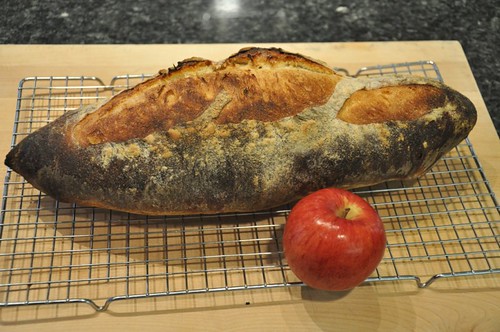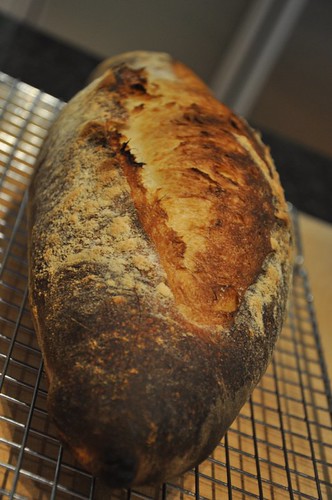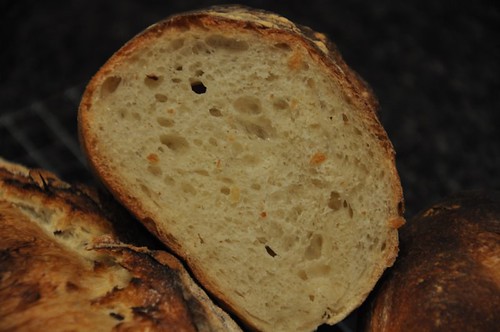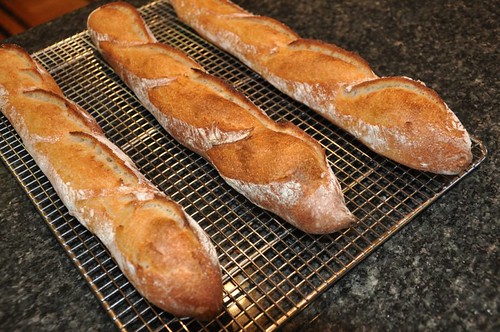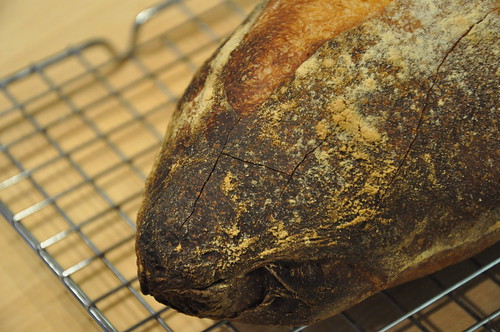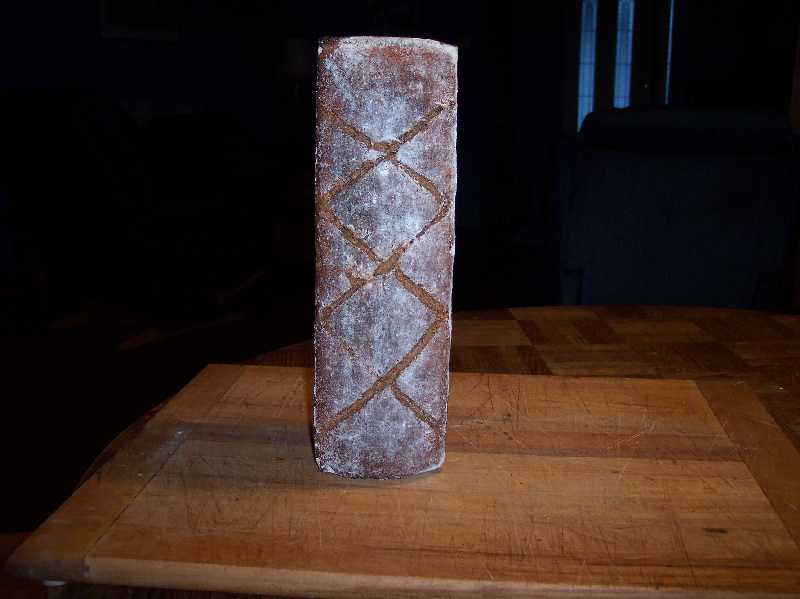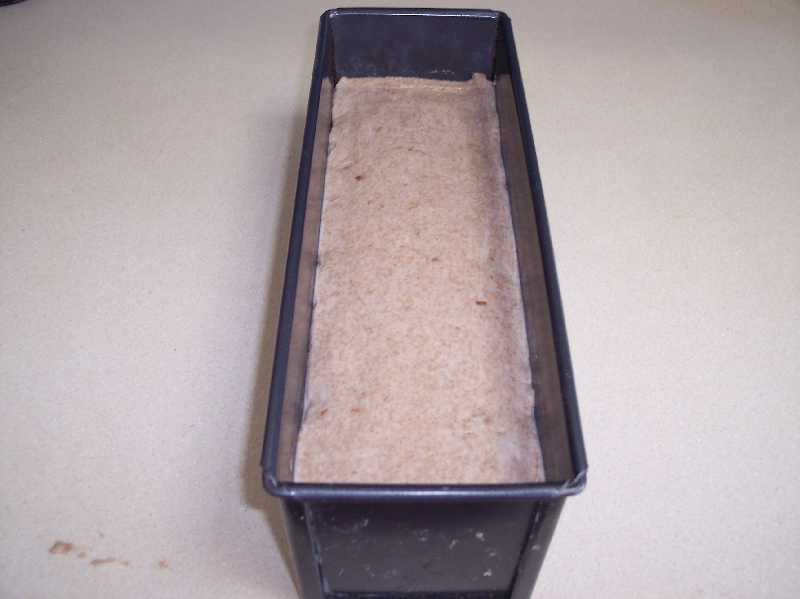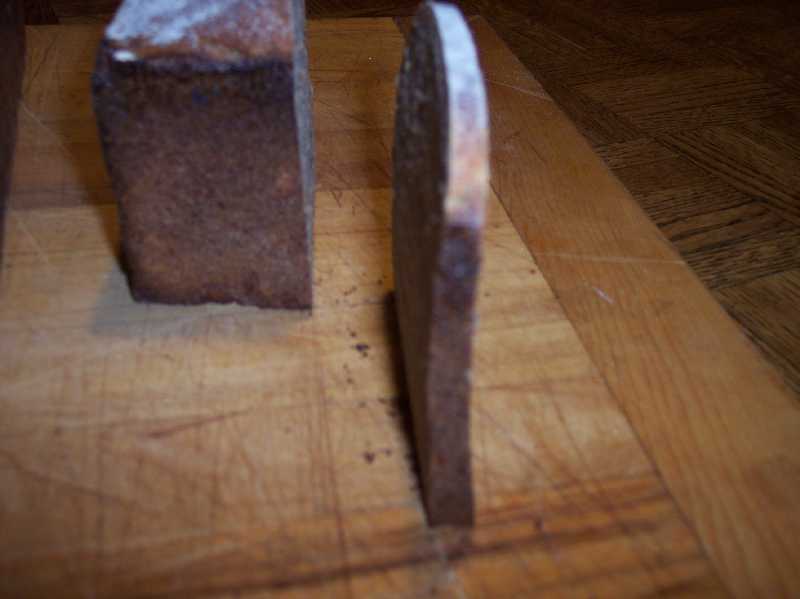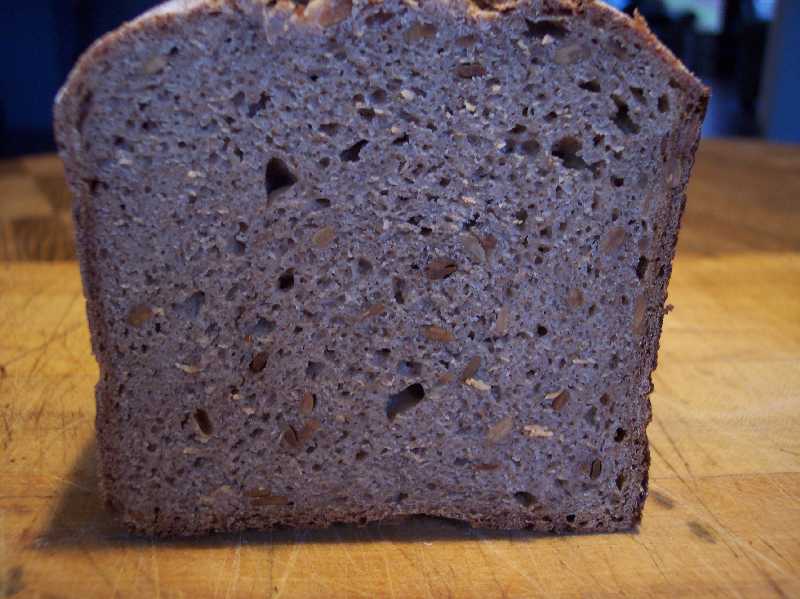One of my favorite stores in Portland is Micucci's, an Italian whole and retail grocery. They don't only have Südtiroler Speck and the best Fontina, they also carry nice wines at reasonable prices (I'm too cheap to spend more than 7 - 10 dollars for a bottle - and choosing European wine is easy because of the standardized labeling). There I purchase Italian 00 flour and spices in bulk, and such items as Marzano tomatoes, cooked chestnuts and gooseberry jam.
Micucci's also has a little bakery, selling pizza by the slice, sfogliatelle with ricotta filling, ciabatta and fluffy "Luna" breads. But what enticed me to show up last Friday at 8:00 sharp was their special "Wheat Walnut Poppy Seed Bread", cut in quarters from a large boule. You have to be there when it comes out of the oven - an hour later it may be already snatched up by customers waiting eagerly in line.
 Micucci's Wheat Walnut Poppy Seed Bread
Micucci's Wheat Walnut Poppy Seed Bread
I really like this bread, but since we're in Portland perhaps once a month, and not necessarily on Fridays, I wanted to re-create this specialty at home. I also thought I could probably even improve it - it's slightly sweet than necessary. Looking closely at the crumb I realized that these dark spots were not all poppy seeds but some other black seeds, too. Smaller than flax, and darker: black sesame.
The dark reddish color of the slices must come from the walnuts, there are plenty in the bread. I don't know how it is leavened, but the tag doesn't specially mention sourdough. The crumb is fairly open - the dough must be well hydrated, and I doubt that it is 100% whole wheat. I wanted to try a spelt version, prefering its nuttier taste to wheat.
How large is the percentage of seeds? I measured walnuts, poppy and black sesame seeds, and eyeballed the amounts. Walnuts with 80 g/510 g flour, and poppy and sesame with 10 g each. Using a basic formula from Reinhart's "Whole Grain Breads" ("Transitional Country Hearth Bread"), I came up with this formula, exchanging spelt for wheat, and adding nuts and seeds. Since it was already afternoon, I didn't work with pre-doughs, but used the stretch & fold technique (from Artisan Bread Every Day").
Usually I bake these kinds of lean bread like my German Feinbrot (preheat to 500 F, bake 10 minutes at 475 and 30 minutes at 425 F) - the crust is thinner and crisper than the one from the original recipe), but I wanted to try a technique I learned from Martin Pöt Stoldt (www.der-Sauerteig.de), falling temperatures to imitate the slowly diminishing heat in a wood fired oven.
WALNUT POPPY SEED SPELT BREAD
312 g water, at 95 F
6 g instant yeast
284 g spelt flour
227 g bread flour
9 g salt
80 g walnuts, slightly toasted
10 g black sesame
10 g poppy seeds
DAY 1
Dissolve yeast in warm water. Add to all other dough ingredients (except for walnuts) in mixing bowl. Mix together for 1 - 2 min. by hand or with mixer at low speed, until ingredients come together in sticky, coarse ball. Let dough rest for 5 min.
Knead dough for 2 min. at medium-low speed, feeding the nuts slowly in it, and adjusting with some more water as needed, dough should be smoother but still sticky. Continue kneading for another 4 min., the last 20 sec. at medium-high speed (or more vigorously by hand). Dough should be still somewhat sticky. Prepare clean, lightly oiled bowl.
Transfer dough to lightly floured work surface. With wet or oiled hands, stretch dough gently into rectangle. Fold it like a business letter. Turn folded dough around and fold it from the sides again in 3 layers like a letter. Pick dough ball up, tucking sides under, and place it into clean bowl. Cover and let rest for 10 min.
Repeat those stretches and folds 3 times, with 10 min. intervals (total time 40 min.) After last stretch and fold maneuver, cover and immediately place into refrigerator for overnight fermentation.
 The dough handled really well, was very smooth and elastic. - That's what it looked like after the final S & F. (a bit more orangey because of the artificial light). The next morning it had considerably darkened with a purplish hue, thanks to the walnuts, and risen to almost double its original size.
The dough handled really well, was very smooth and elastic. - That's what it looked like after the final S & F. (a bit more orangey because of the artificial light). The next morning it had considerably darkened with a purplish hue, thanks to the walnuts, and risen to almost double its original size.
DAY 2
Remove dough 2 hrs. before using.
Preheat oven to 480 F/250 C, including steam pan.
Shape boule and place in banneton. Proof for 45 - 60 min., or until it has grown 1 1/2 times to almost double its original size. Turn out onto peel. Slash.
Bake with steam (1 cup boiling water) at falling temperatures:
10 minutes at 480 F/250 C, 10 minutes at 445 F/230 C, remove steam pan, rotate bread 180 degrees. Continue baking
10 minutes at 410 F/210 C, 10 minutes at 375 F/190 C, 5 - 10 min at 355 F/180 C (internal temperature should be at least 205, better 210 F/96 - 99 C). Bread should sound hollow when thumped on bottom.
Let cool on wire rack.


Walnut Poppy Seed Spelt Bread Crumb: not quite as dark as the Micucci version
The falling temperatures create a really amazing crust!! The bread tasted very good, but next time I would rather make it with a white sourdough starter - we love the little more tang.



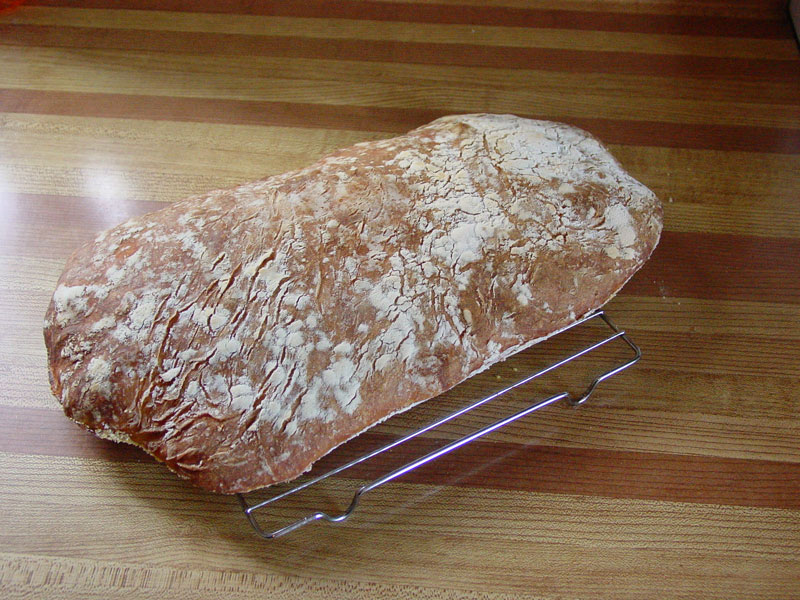
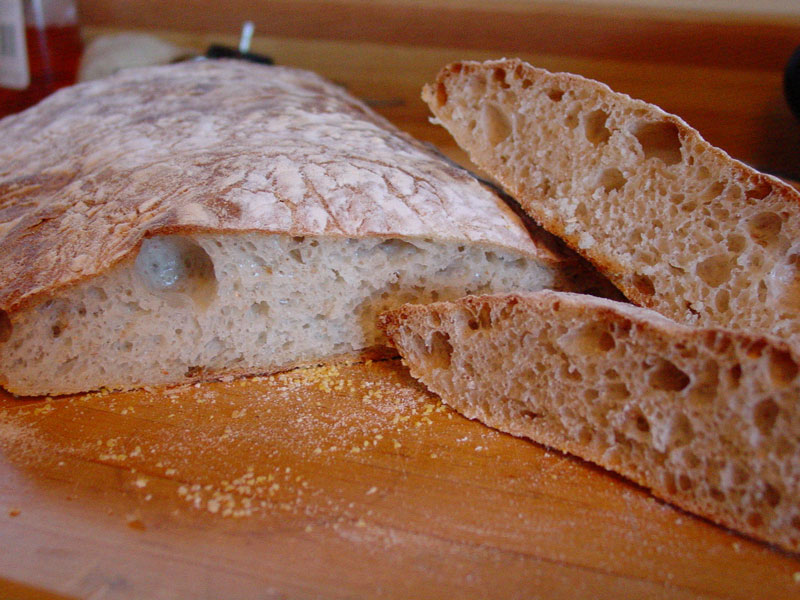

 Micucci's Wheat Walnut Poppy Seed Bread
Micucci's Wheat Walnut Poppy Seed Bread The dough handled really well, was very smooth and elastic. - That's what it looked like after the final S & F. (a bit more orangey because of the artificial light). The next morning it had considerably darkened with a purplish hue, thanks to the walnuts, and risen to almost double its original size.
The dough handled really well, was very smooth and elastic. - That's what it looked like after the final S & F. (a bit more orangey because of the artificial light). The next morning it had considerably darkened with a purplish hue, thanks to the walnuts, and risen to almost double its original size.




